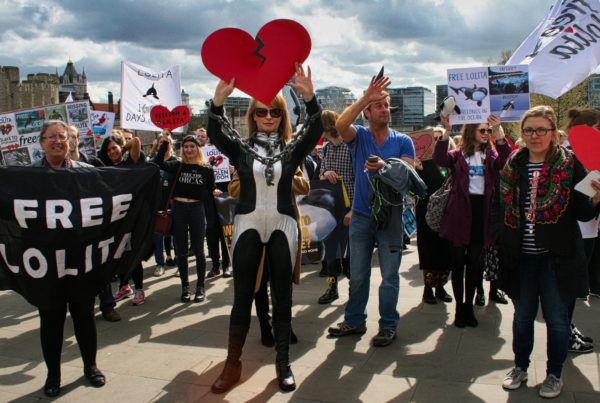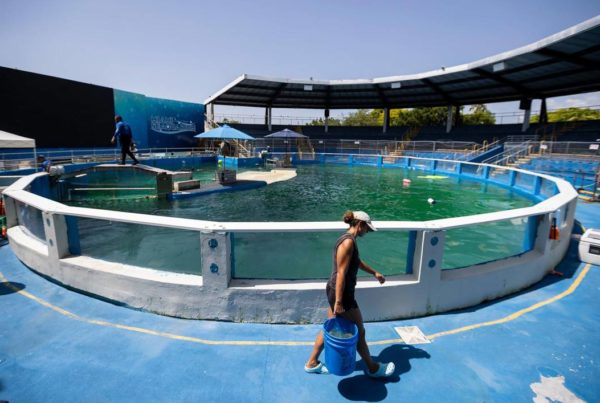On Feb. 20, 1968, Hugo was captured in Vaughn Bay, Washington; he was kept in a holding pen in Seattle before being transferred to the Miami Seaquarium on May 16, 1968.
Hugo was held in the “Celebrity Bowl” for two years; today, the tank houses manatees. Ric O’Barry, the founder of the Dolphin Project, became his caretaker; he was warned that orcas were dangerous; Ric found that Hugo was a sensitive, intelligent creature and was not scared of him.
Hugo ate 100 pounds of fish daily; the bigger he got, the smaller his little whale bowl seemed. The new tank construction had constant delays and slow progress. Ric questioned his supervisors; they were dismissive, and nothing changed. “I left, this time for good.”
On Sept. 24, 1970, a female orca (Tokitae) later, named Lolita arrived; they were housed together on June 2, 1971, after being heard calling out to each other across the park. Unknown to the Miami Seaquarium, they were captured from the Southern Resident orca population and shared similar dialects, allowing them to communicate.
Hugo repeatedly injured himself; he severed the tip of his rostrum, and a vet had to sew it back on. “His powerful drive shattered the acrylic plastic bubble and knocked a five-inch hole in it. And a piece of jagged plastic severed Hugo’s nose.” Hugo rammed his head into the tank multiple times throughout his twelve years in captivity.
In January 1980, Hugo started acting sluggishly; on March 4, Hugo died; the cause of his death was a brain aneurysm.
Miami Seaquarium lifted his body from the tank and disposed of him at an undisclosed location believed to be the Dade County Landfill; they did not commemorate his life or death; it was as if he had never existed. Their website still says, “Miami Seaquarium welcomes the arrival of Hugo, its First Killer Whale to the park.”
Toki has been alone ever since.



